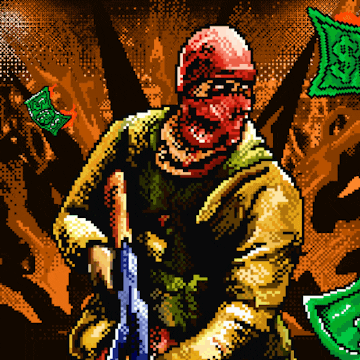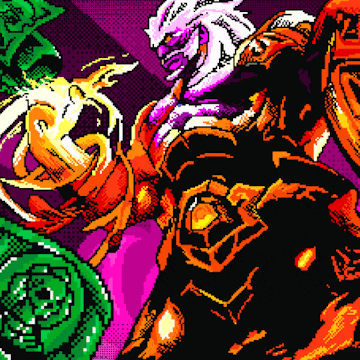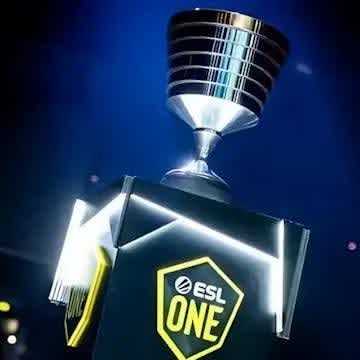The IEM Rio Major is heading for the playoffs – but FaZe Clan, Sadokist and Adela Sznajder’s camera won’t be there
The drama continues in Rio, both on and off the servers, as we gear up for the playoffs.
Upsets galore in the nth ESL tourney of the year
So, none of the top three from the HLTV rankings have made it to the playoffs at Rio, and NAVI themselves were just a single series away from missing out, which would have made this the first Major where neither of the previous finalists made it to the top eight. (This wasn’t even the case after the COVID years, as the ex-AVANGAR core ended up losing to Heroic in the quarterfinals.)
Though there were many oddities with the rankings as of late due to how the player break impacted the calculations – Team Vitality in #1 was clearly just a mirage – it’s safe to say that this is becoming one of the most upset-ridden Majors in recent history. Of course, the absence of G2 and Astralis have already confirmed this in some way before the event even started. A quick look at recent elite-level events only serves to underline this even more.
Three of the four semifinalists from Pro League Season 16 (Vitality, Liquid and G2) are missing in action, and only one of the six teams that qualified for the BLAST Premier Fall Finals via the Groups event made it to the last eight here. If you’re willing to go back to before the player break with IEM Cologne, it’s just two of the six teams again.
So, is this a big realignment, a showcase of how franchised slots reward poor performances, a set of disconnected upsets, or a bit of all three? Sporting events, especially of the e kind, come with too noisy of a dataset for us to be able to tell for sure, and that is part of the fun. However, not getting the best teams to play a multitude of games is a disappointment for everyone. In the World Cup, with its round-robin system and pot-based seeding, it takes significant effort for a top team to miss out on the knockout stages, and even if they do, they had three full games to play. Here, this isn’t exactly the case, with two truncated series and major differences in the quality of opposition.
All this is fun and exciting in a regular circuit event, but it is not ideal for the most prestigious event of all. We’re still talking about Boston’s Cloud9 as if they were an elite-level squad on par with other Major winners, despite how little the team or the individuals on it accomplished either before or after that miraculous tournament run. (In a way, you could also say the same about Gambit in Kraków.)
Major format issues: adjusting the Swiss system
In the current format, the small snowballs of early upsets turn into a full-scale avalanche by the time the Legends teams enter the field, giving them no reward for their strong performances in the RMR – if anything, it was the opposite case here. Suppose a team has an 85% chance to win in each round after going down 0-2: they will still miss out on the playoffs almost 40% of the time. Meanwhile, other teams get a significantly easier run to the big time.
That isn’t to say the FaZe-shaped elephant in the room deserved anything better than what they got: if a team can’t beat Bad News Eagles in a best-of-three series, they don’t belong in a Major’s playoffs, no matter their pedigree. However, had they fallen short at the 2-2 hurdle off the back of losses to Cloud9 and Vitality in the one-mappers, then there would be a better case to complain. Here, with a poorly planned veto curveball and dull individual play, they deserved this outcome.
There’s an easy solution to all this without making major changes to the format: make the second round of play best-of-three as well. This way, there’s still a bit of variance and potential for hiccups based on how the opening round shakes out, but no one has to win three back-to-back best-of-three series after drawing the short straw in terms of seeding. This would be a decent compromise between what we’ve got right now and the all-bo3 bonanza of the long-gone StarLadder’s StarSeries & i-League events. The good teams reliably made it far in that format.
Also, is it just me, or… is this a bit too much of CS? No, not even of CS:GO matches, it’s the Major, it’s always fun to follow, but more like… ESL fatigue? We’ve had the Pro League and the RMR and now the Major basically back-to-back-to-back, with the same broadcast sets and graphics and gags and videos and desk discussions and… it’s just overwhelming.
I felt the same way bobbing in and out of the Euro 2020 (in 2021) coverage, when the exhausted teams and players crammed in an extra tournament of subpar performances, making the whole thing feel like an asterisk-ridden mess. That was due to the pandemic-enforced contraction of the competitive sporting calendar, though. This is much more like the Qatar World Cup: no reason but greed led to so many of the same (or at least same-ish) tournaments by the same organizer in such a short period of time.
Seven more series (plus a showmatch) to go. It looks like Sadokist drank himself out of a career and someone was a big enough asshole to swipe Adela Sznajder’s camera. Credit to ESL for keeping the drama outside the broadcast, and to the ever-reliable Anders for slotting in so seamlessly. Will we look back at Rio as a louder, samba-filled Krakow, or will the eventual winner establish themselves as a team with a top pedigree? Soon, we will have all the answers.
Photo credit: ESL / Adela Sznajder






